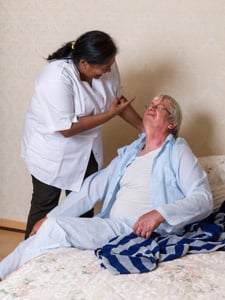
Nursing Home Workers Post Abusive Photos of the Elderly on Social Media Sites
Nursing home abuse can take many forms. According to a recent article in The Washington Post, facilities for the elderly across the country have reported an alarming trend: nursing home workers using social media sites to post abusive photos of patients. There are many kinds of elder abuse, and abuse need not be physical to cause harm. As a fact sheet from the National Center on Elder Abuse (NCEA) and the Administration on Aging (AoA) makes clear, nursing home abuse can be physical, sexual, and even emotional. Psychological abuse should not be discounted when we consider risks to our elderly loved ones’ health and well-being.
As the article in The Washington Post details, there have been 35 identified instances “since 2012 in which workers at nursing homes and assisted-living centers have surreptitiously shared photos or videos of residents, some of whom were partially or completely naked.” How are employees sharing these abusive photos and videos? They are turning to social media sites like Facebook and Snapchat. The article points out that 16 of the 35 cases recently documented by ProPublica involved Snapchat—and that number only represents the incidents that we know about.
In some of the cases reported, employees engaged in behavior that may rise to the level of emotional abuse. For instance, some nursing home workers posted photos or videos of patients in private situations—sitting on bedside toilets or showering. In other cases, nursing home and assisting-living facility workers actually documented themselves as they engaged in behavior that looks more like physical abuse. For instance, one employee is alleged to have “recorded another using a nylon strap to lightly slap the face of a 97-year-old woman with dementia.” The video shows the elderly woman “crying out, ‘Don’t! Don’t!’ as she was being struck,” the article reports.
In nearly all of the cases cited by ProPublica, news of the abuse typically did not come from the facility itself. Rather, friends or acquaintances of those alleged to have taken the videos tended to “alert home officials or authorities.” A number of the cases have resulted in criminal prosecutions.
The Facts About Nursing Home Abuse
To better understand the seriousness of nursing home abuse in our country, it is essential to understand the size of the problem. The fact sheet from the NCEA and AoA reports the following facts that help to make clear some of the reasons we need to take nursing home abuse prevention seriously:
- As of 2010, older adults (those aged 65 and older) comprised about 13% of the total population (more than 40 million people). That number is expected to rise over the coming decades. By 2050, experts predict that older adults will make up about 20% of the total population.
- Adults aged 85 and older make up the “fastest growing segment of America’s population.”
- Anywhere from 7.6% to 10% of adults are predicted to have been victims of elder abuse (excluding financial abuse).
- Elder safety advocates believe that only a fraction of nursing home abuse cases are reported, and thus the real numbers of those abused are actually much higher than the data we currently have.
- Based on a study conducted by the National Research Council, only about 7% of elder abuse cases “come to the attention of authorities.”
If you suspect that an elderly loved one has been the victim of elder abuse, contact a nursing home abuse lawyer as soon as possible to determine your loved one’s rights.



